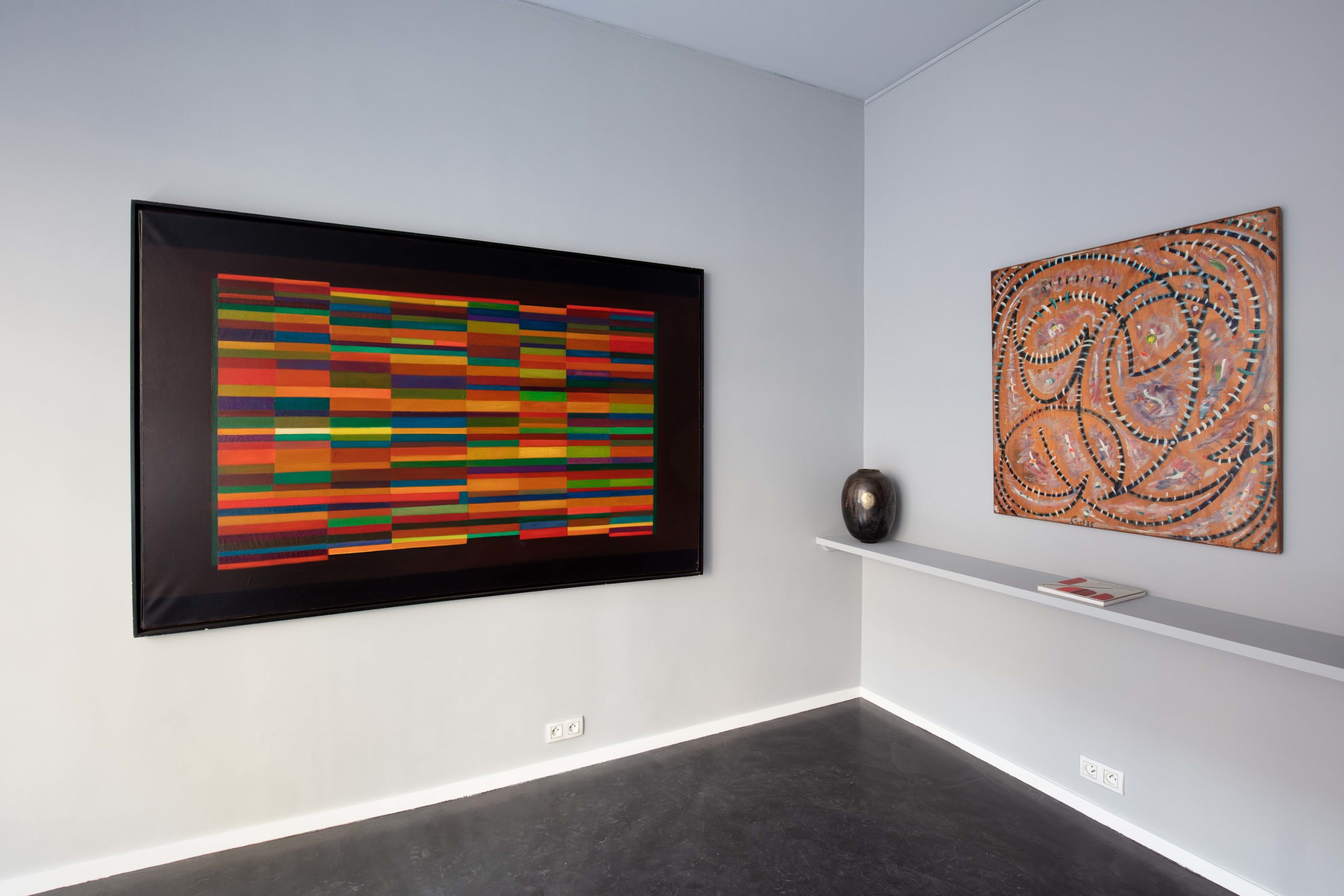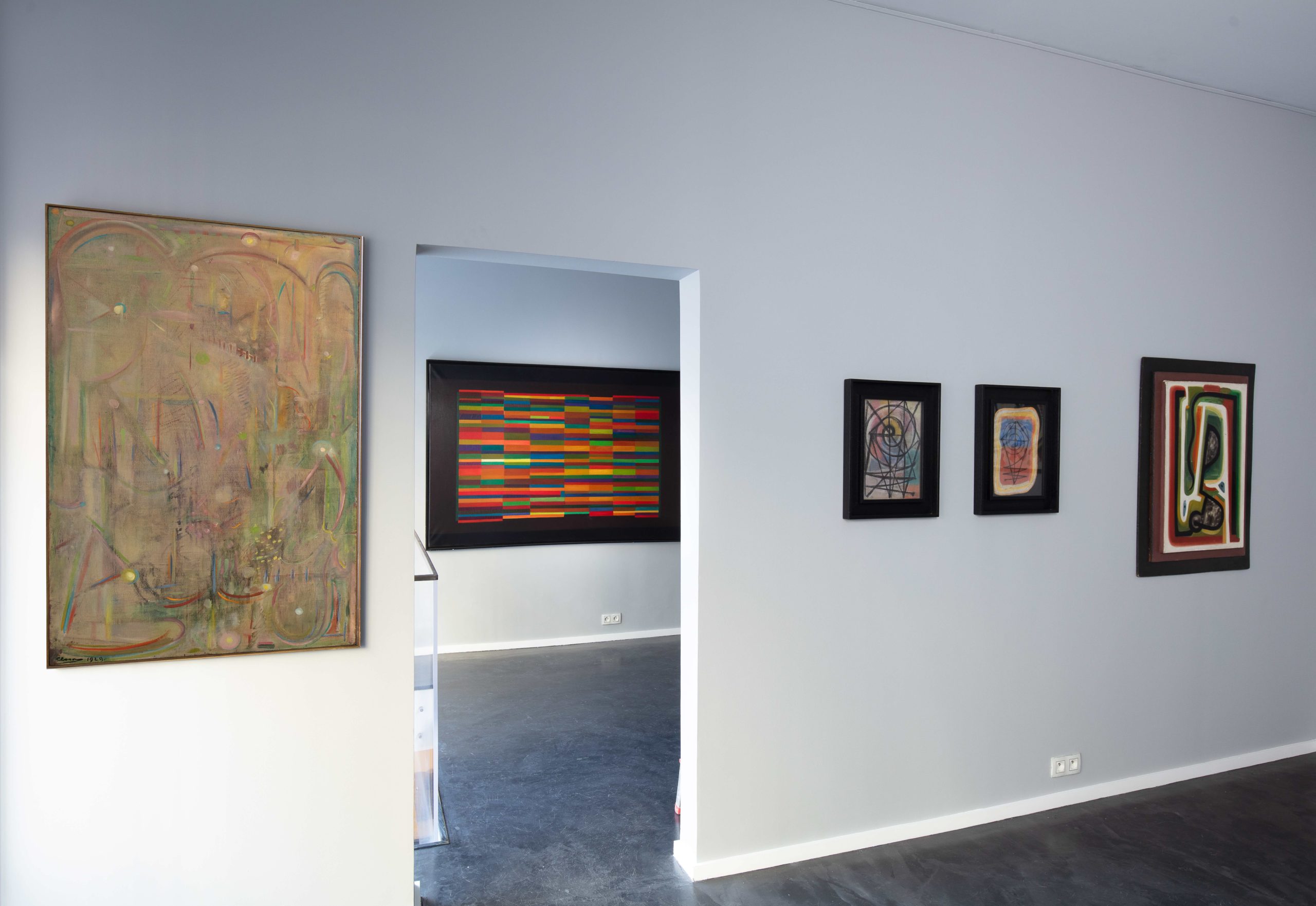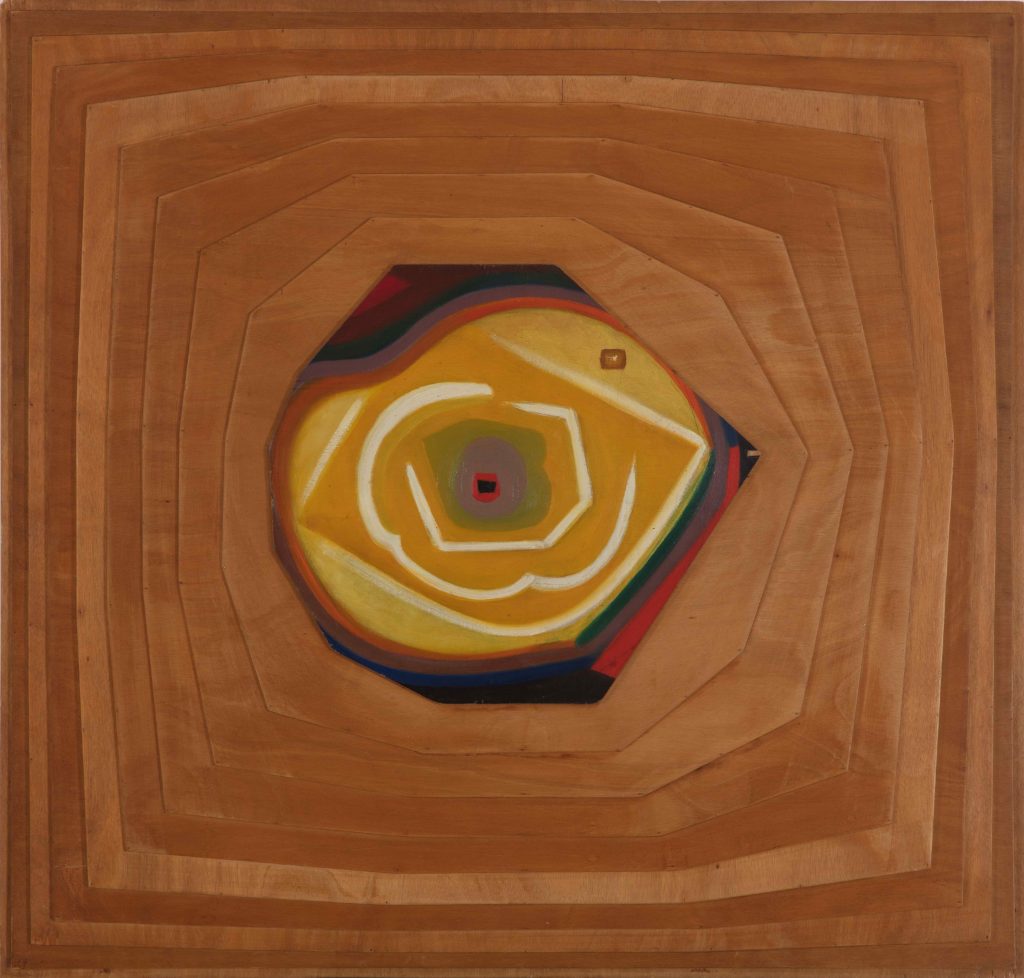HENRI-JEAN CLOSON
01-02-2024 > 30-03-202
Galerie Minsky is pleased to present, through march 30th 2024, a selection of paintings on canvas and wood, drawings and sculptures by the artist mainly from the 1930s onwards.
Henri-Jean Closon was born in Liège in the late 19th century. He experienced an eventful youth in Belgium and Germany, training as a butcher, taking interest in painting, meeting artists, and eventually becoming a smuggler during WW1. In 1918, he settled in Paris. His temperament impressed Kupka, Delaunay, Ravel and Mondrian, of whom he became a close friend. Like several of them, he took part in the Abstraction-Création collective. Closon was a great innovator as well as a direct mentor to several renowned painters and sculptors such as Herbin or Émile Gilioli.



Exhibition views, © Matthieu Lombard 2024
“Rhythm is therefore creative”
Henri-Jean Closon in Les couleurs des souvenirs,
Émission « Hors Texte », dir. Jean Antoine, 1988
The artist’s highly singular, pioneering style is the result of his passionate exploration of color relationships. Closon used to describe his research through a series of analogies with music, by referring especially to rhythm and cadence phenomena.
Closon moved to Voiron (Isère) in 1936 in order to further his artistic approach far from the fashions and influences of the Parisian society. When he went back to Paris twenty years later, his house became a meeting place for artists and art lovers. The body of work the artist constituted throughout his seven-decade career resists categorization. Though he was an important member of the Abstraction-Création collective during the 30s, he did not consider his art to be abstract. In polemical discussion with Mondrian’s radical statements regarding the role of curves in painting, he expressed a preference for subtle in-betweens. Henri-Jean Closon mixed references to linguistics, music theory and Christian iconography, experimenting on a variety of formats and materials with unfailing rigor.

The exhibition focuses on what seems to be the most important chapter of his artistic path, which corresponds to his decision of distancing himself from the Parisian art scene from the mid-30s to the mid-50s. The works on display, whether sculptures, drawings or large-scale paintings, testify to his independence as a creator. A few interesting early works are also exhibited including the cézannian “Nature morte aux pommes”, 1903.
“I sometimes work for a year on a painting, getting up at dawn because you have to get up before the sun hits the earth if you really want to see the interplay of values, if you’re interested in the irradiation of matter (…) You’re in the studio, like the hunter stalking his game in the morning. Then a color appears, a second, a third, it goes on, so you see your painting come to life, and it doesn’t last long, it lasts fifteen, twenty, thirty minutes at most, and woe betide the one who hasn’t seen it!”
Henri-Jean Closon in Les couleurs des souvenirs,
Émission « Hors Texte », dir. Jean Antoine, 1988


Chrie, 1945, oil on panel, 113 x 118 cm / Une entorse au rythme, 1938, oil on Canvas, 100 x 74 cm
Henri-Jean Closon’s works were exhibited during his lifetime in museums in Liège and Grenoble. Some of them have been incorporated into major collections such as that of the Musée d’Art Moderne in Paris.
